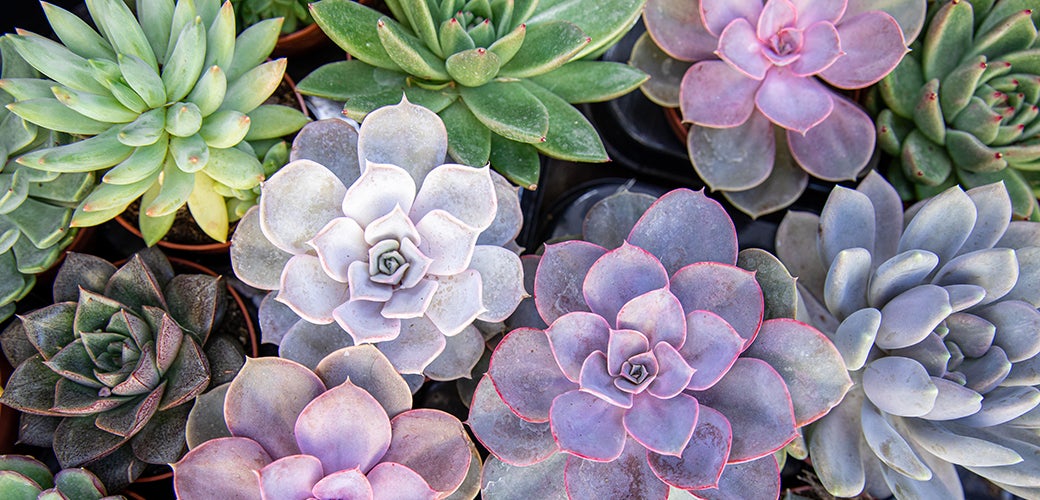Are Succulents Safe to Have Around Pets?

Interest in bringing some greenery indoors has only increased as more people spend more time at home. And why not? Among their many advantages are the ability to add visual interest, improve mental health, and even purify the air. Having plants may be a little more difficult for people who have pets at home, especially if your pet thinks a new plant might be tasty.
Succulents are popular because of their small size, easy care, and attractive appearance. People can enjoy a wide variety of different types of foliage at home thanks to the wide variety of succulents that are available today. More variety, though, may also make it more difficult to determine which plants are suitable for your pets. Popular succulents that are poisonous and those that are safe can be found on the ASPCA Animal Poison Control Center (APCC) list, along with safety advice for your pets.
Non-Toxic Succulents
Consider one of the following succulents if your pet enjoys nibbling plants or if you would rather not have to worry about your pet eating a plant. But it’s crucial to keep in mind that “non-toxic” does not equate to “no problem.” Since plants are not typically a part of their diet, some pets may experience mild stomach upset after consuming any kind of plant. Keeping a list of the scientific names of the plants in your home is also a good idea because different species can have different levels of toxicity and many common names overlap with one another.
Toxic Succulents
If consumed, jade plants, or crassula ovata, are toxic and may induce nausea, vomiting, diarrhea, and lethargy. The jade plant is also referred to as the money tree, money plant, or lucky plant, among other common names. This is not the same as a pachira aquatica, which goes by the name “money tree.” Try keeping the jade plant in a high spot that your pet cannot reach because it can withstand both high and low levels of sunlight.
Euphorbia tirucalli, also known as pencil cactus, is a cute little succulent that gets its name from its stems, which have a pencil-sized diameter. If you have ever broken a pencil cactus stem, you have likely seen the plant’s white sap, also known as latex. Regretfully, if your pet consumes that white substance, it can cause problems. The sap contains an irritant that causes vomiting and drooling. Additionally, redness, swelling, squinting, and pawing of the eyes if any come in contact with them are causes for concern. Severe situations may result in corneal ulcers, which are ulcers on the surface of the eye. It’s best to leave these plants at the store or store them somewhere your pet cannot access because they can cause so much trouble for pets.
Because of its hardiness, Mother-in-Law’s Tongue, or Sansevieria trifasciata, is a great plant to start with for people who are new to houseplants. When consumed by dogs or cats, it is thought to be toxic and can result in vomiting, diarrhea, drooling, and lethargy. Like the jade plant, it can withstand both high and low light levels, so you can keep it high and out of reach of paws!
Senecio rowleyanus, also known as a string of pearls, is not always the easiest to locate but is well-liked because of its unusual appearance. If ingested, it can cause stomach upset–predominately vomiting–and lethargy. This plant has the benefit of being a good hanging plant, which makes it simpler to keep out of our pets’ reach.
Check out the APCC’s comprehensive list of toxic and non-toxic plants if you’re unsure if the succulent you have at home is poisonous.
In the event that you believe your pet may have consumed anything poisonous, please call the ASPCA Animal Poison Control Center at (888) 426-4435 or your veterinarian right away.
Succulents That are NOT Pet-Friendly
Please Note: Toxicity research is an ongoing process. Varieties other than those listed below may potentially result in an unfavorable reaction.
Aloe vera is great for soothing skin irritations in humans. It does not, however, make a great snack for pets. It is okay to apply aloe vera gel to the skin of humans and animals, but it should never be consumed. One of the harmful substances found in these plants is aloin, which is a bitter, yellow liquid. Its found just beneath the outer skin of the leaves.
Symptoms: Lethargy, vomiting, diarrhea, red urine
Euphorbia stems containing white latex sap are what give them the nickname “Milk Plants.” Unfortunately, if consumed, this sap can be poisonous and irritate skin.
Symptoms: Mouth irritation, stomach pain, vomiting, diarrhea
The rubbery Jade Plants (Crassula) are renowned for being incredibly difficult to kill. Regretfully, consuming jade leaves can irritate dogs and cats.
Symptoms: Lethargy, clumsy movements, dry-heaving, vomiting
Source: ASPCA
Succulents that grow in abundance, kalanchoe are a wonderful option for novice gardeners. But, they ought to be out of the reach of birds, dogs, and cats. If consumed, kalanchoe may cause mild stomach distress or irritation of the pet’s mouth. The onset of symptoms can occur anywhere from 12 hours to 5 days.
Symptoms: Oral irritation, drooling, vomiting, diarrhea
Source: DVM360
Senecio feature a high diversity of shapes and growth habits. There is evidence to suggest that String of Pearls (S. rowleyanus) can cause an adverse reaction if ingested. Make sure your trailing variety is out of your playful cats’ reach. Take care when handling this genus of Senecio because other species might also be problematic.
Symptoms: Listlessness, vomiting, diarrhea
Although cacti are not poisonous when eaten, pets should still be cautious around them due to their sharp spines. Be especially cautious when handling Opuntia (prickly pears) species members. Although their spines are not always long, they do have small, barbed glochids. Glochids can become embedded in skin and spread quickly, especially when adhered to fur.
Symptoms: Skin irritation
Other Ways to Help:
